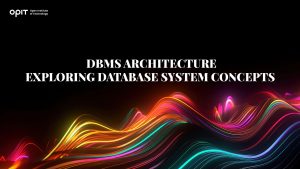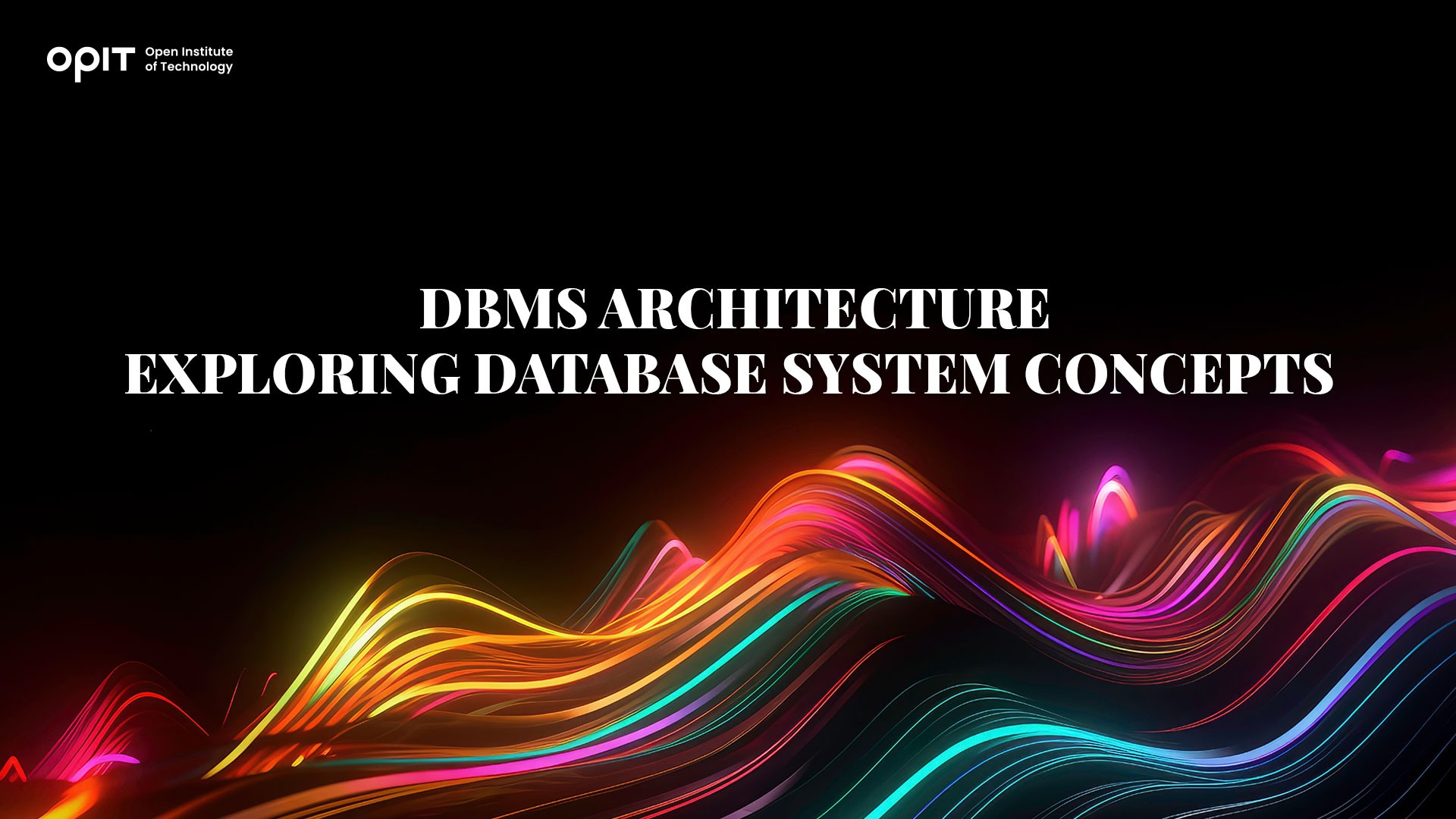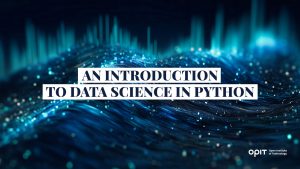

Today’s tech-driven world is governed by data – so much so that nearly 98% of all organizations are increasing investment in data.
However, company owners can’t put their feet up after improving their data capabilities. They also need a database management system (DBMS) – a program specifically designed for storing and organizing information efficiently.
When analyzing a DBMS, you need to be thorough like a detective investigating a crime. One of the elements you want to consider is DBMS architecture. It describes the structure of your database and how individual bits of information are related to each other. The importance of DBMS architecture is enormous, as it helps IT experts design and maintain fully functional databases.
But what exactly does a DBMS architecture involve? You’ll find out in this entry. Coming up is an in-depth discussion of database system concepts and architecture.
Overview of DBMS Architecture
Suppose you’re assembling your PC. You can opt for several configurations, such as those with three RAM slots and dual-fan coolers. The same principle applies to DBMS architectures.
Two of the most common architectures are three-level and two-level architectures.
Three-Level Architecture
Three-level architecture is like teacher-parent communication. More often than not, a teacher communicates with parents through children, asking them to convey certain information. In other words, there are layers between the two that don’t allow direct communication.
The same holds for three-level architecture. But instead of just one layer, there are two layers between the database and user: application client and application server.
And as the name suggests, a three-level DBMS architecture has three levels:
- External level – Also known as the view level, this section concerns the part of your database that’s relevant to the user. Everything else is hidden.
- Conceptual level – Put yourself in the position of a scuba diver exploring the ocean layer by layer. Once you reach the external level, you go one segment lower and find the conceptual level. It describes information conceptually and tells you how data segments interact with one another.
- Internal level – Another name for the internal level is the physical level. But what does it deal with? It mainly focuses on how data is stored in your system (e.g., using folders and files).
Two-Level Architecture
When you insert a USB into your PC, you can see the information on your interface. However, the source of the data is on the USB, meaning they’re separated.
Two-level architecture takes the same approach to separating data interface and data structure. Here are the two levels in this DBMS architecture:
- User level – Any application and interface in your database are stored on the user level in a two-level DBMS architecture.
- System level – The system level (aka server level) performs transaction management and other essential processes.
Comparison of the Two Architectures
Determining which architecture works best for your database is like buying a car. You need to consider how easy it is to use and the level of performance you can expect.
On the one hand, the biggest advantage of two-level architectures is that they’re relatively easy to set up. There’s just one layer between the database and the user, resulting in easier database management.
On the other hand, developing a three-level DBMS architecture may take a while since you need to include two layers between the database and the user. That said, three-level architectures are normally superior to two-level architectures due to higher flexibility and the ability to incorporate information from various sources.
Components of DBMS Architecture
You’ve scratched the surface of database system concepts and architecture, but don’t stop there. It’s time to move on to the basics to the most important elements of a DBMS architecture:
Data Storage
The fact that DBMS architectures have data storage solutions is carved in stone. What exactly are those solutions? The most common ones are as follows:
- Data files – How many files do you have on your PC? If it’s a lot, you’re doing exactly what administrators of DBMS architectures are doing. A large number of them store data in files, and each file is categorized into blocks.
- Indexes – You want your database operations to be like lightning bolts, i.e. super-fast. You can incorporate indexes to accomplish this goal. They point to data columns for quick retrieval.
- Data dictionary – Also known as system logs, data dictionaries contain metadata – information about your data.
Data Manipulation
A large number of companies still utilize manual data management methods. But using this format is like shooting yourself in the foot when there are advanced data manipulation methods are available. These allow you to process and retrieve data within seconds through different techniques:
- Query processor – Query processing refers to extracting data from your DBMS architecture. It operates like any other multi-stage process. It involves parsing, translation, optimization, and evaluation.
- Query optimizer – A DBMS architecture administrator can perform various query optimization tasks to achieve desired results faster.
- Execution engine – Whenever you want your architecture to do something, you send requests. But something needs to process the requests – that something is the execution engine.
Data Control
We’re continuing our journey through an average DBMS architecture. Our next stop is data control, which is comprised of these key elements:
- Transaction management – When carrying out multiple transactions, how does the system prioritize one over another? The answer lies in transaction management, which is also about processing multiple transactions side by side.
- Concurrency control – Database architecture is like an ocean teeming with life. Countless operations take place simultaneously. As a result, the system needs concurrency control to manage these concurrent tasks.
- Recovery management – What if your DBMS architecture fails? Do you give up on your project? No – the system has robust recovery management tools to retrieve your information and reduce downtime.
Database System Concepts
To give you a better understanding of a DBMS architecture, let’s describe the most important concepts regarding this topic.
Data Models
Data models do to information what your folders do to files – organize them. There are four major types of data models:
- Hierarchical model – Top-down and bottom-up storage solutions are known as hierarchical models. They’re characterized by tree-like structures.
- Network model – Hierarchical models are generally used for basic data relationships. If you want to analyze complex relationships, you need to kick things up a notch with network models. They enable you to represent huge quantities of complex information without a hitch.
- Relational model – Relations are merely tables with values. A relational model is a collection of these relations, indicating how data is connected to other data.
- Object-oriented model – Programming languages regularly use objects. An object-oriented model stores information as models and is usually more complex than other models.
Database Schema and Instances
Another concept you should familiarize yourself with is schemas and instances.
- Definition of schema and instance – Schemas are like summaries, providing a basic description of databases. Instances tell you what information is stored in a database.
- Importance of schema in DBMS architecture – Schemas are essential because they help organize data by providing a clear outline.
Data Independence
The ability of other pieces of information to remain unaffected after you change one bit of data is known as data independence. What are the different types of data independence, and what makes them so important?
- Logical data independence – If you can modify logical schemas without altering the rest of the system, your logical data is independent.
- Physical data independence – Physical data is independent if it remains unaffected when changing your hardware, such as SSD disks.
- Significance of data independence in DBMS architecture – Independent data is crucial for saving time in database management because it reduces the amount of information that needs to be processed.
Efficient Database Management Systems
Database management systems have a lot in common with other tech-based systems. For example, you won’t ignore problems that arise on your PC, be they CPU or graphics card issues. You’ll take action to optimize the performance of the device and solve those issues.
That’s exactly what 75% of developers and administrators of database management systems do. They go the extra mile to enhance the performance, scalability, flexibility, security, and integrity of their architecture.
Performance Optimization Techniques
- Indexing – By pointing to certain data in tables, indexes speed up database management.
- Query optimization – This process is about finding the most efficient method of executing queries.
- Caching – Frequently accessed information is cached to accelerate retrieval.
Scalability and Flexibility
- Horizontal scaling – Horizontal scaling involves increasing the number of servers.
- Vertical scaling – An administrator can boost the performance of the server to make the system more scalable.
- Distributed databases – Databases are like smartphones in that they can easily overload. Pressure can be alleviated with distributed databases, which store information in multiple locations.
Security and Integrity
- Access control – Restricting access is key to preventing cyber security attacks.
- Data encryption – Administrators often encrypt their DBMS architecture to protect sensitive information.
- Backup and recovery – A robust backup plan helps IT experts recover from shutdowns and other unforeseen problems.
Preparing for the Future Is Critical
DBMS architecture is the underlying structure of a database management system. It consists of several elements, all of which work together to create a fully functional data infrastructure.
Understanding the basic elements of DBMS architecture is vital for IT professionals who want to be well-prepared for future changes, such as hybrid environments. As the old saying goes – success depends upon preparation.
Have questions?
Visit our FAQ page or get in touch with us!
Write us at +39 335 576 0263
Get in touch at hello@opit.com
Talk to one of our Study Advisors
We are international
We can speak in:



